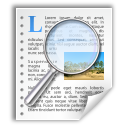Free readability tools to check for Reading Levels, Reading Assessment, and Reading Grade Levels.
[ HOME ] Check Your Readability: Check Text Readability NOW  Free Readability Calculators Learn about Readability Formulas: Dale-Chall Formula Flesch Reading Formula The Fry Graph SPACHE Formula [ View All ] Readability Help: [ View All Articles] Writing Tips: [ View All Articles] English Writing Products: StyleWriter software Site Map About Us Contact Us Write for Us |
Understanding Differences Between Writing for the Web and Writing for Print Knowing your audience and the purpose of your content is paramount whether writing for the web or for print. However, there are significant differences between the two mediums of which a writer must be aware before writing Web content for the first time. Compared to print, the Web is generally an informal and immediate medium. Users have come to expect a more informal writing style that is more straightforward. Puns and figurative language don’t translate well and can often be confusing for international users. With print media, users proceed linearly from page to page and they have a tangible product that can visually cue the user as to how much information there is and how the information is ordered. On the Web, there is no tangible product to size up, thus site navigation is an invaluable component of Web site content. A user can arrive at any page from any other page that is linked to it. Because users can move between any number of pages, in any order, every Web page should be independent from the others and able to explain the topic to the user without assuming the user has read any other related pages. In the Western society, printed media is usually read starting at the top, then from left to right, then quickly to the very bottom of the right, leaving “dead space” at the bottom left side of the page. This “dead space” is an area on the page which the human eye is least likely to view and from which the human mind is least likely to comprehend information. The Nielsen Norman Group studied human reading patterns in their usability studies. Jakob Nielsen and Kara Pernice used eye-tracking equipment to record users’ eye movements and facial expressions as they viewed Web content. To capture this information, “cameras and infrared emitters were hidden behind small, dark windows at the top and bottom of the [computer] monitor.” The results of their study demonstrated that users have a tendency to read in an “F” pattern and most often focus on bulleted information. The implications of their findings indicate that Web-content writers can improve their Web pages by placing important content and navigation in these most frequently viewed areas. Another important difference between print and Web content is how the content itself is presented. Web content should have 50% of the word count of its printed equivalent because Web users read about 25% slower from computer screens than from paper. This is why repurposing printed media, such as a brochure, as Web content does not usually provide an optimal experience for Web users. Web content is most easily read if written in a sans-serif font, as opposed to the serif font standard typically used in print. Serifs, the “hooks” or “tails” on the ends of letters are designed to help transition a reader’s eye from letter to letter. On the Web, however, the serifs can sometimes impede readability due to the pixels in which computer fonts are created which cause content written in serif letters to run together on screen. Additionally, sans-serif fonts are easier to read in small chunks, the way Web content is generally best written. Leaving white space in your Web content is as important as it is for print content. It helps guide the user’s eye to the content and improves the usability of the Web site. Once the purpose of the site and the intended target audience are determined, as well as the unique requirements of writing Web content for best comprehension and user experience are understood, Web-content writers can begin effectively writing for the Web. About Readability >> READABILITY FORMULAS New Dale-Chall - Flesch Reading Ease - Flesch Grade Level - Fry Graph -Gunning FOG - Powers-Sumner- Kearl - SMOG - FORCAST - Spache  StyleWriter software: use it to write better content! Download your free trial! |
|
|
||